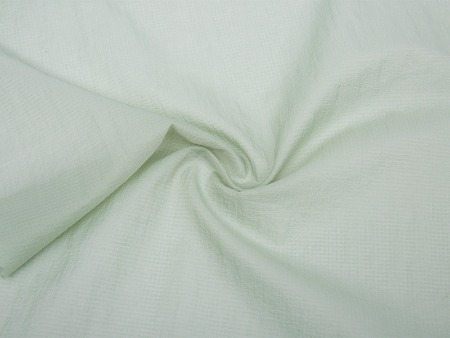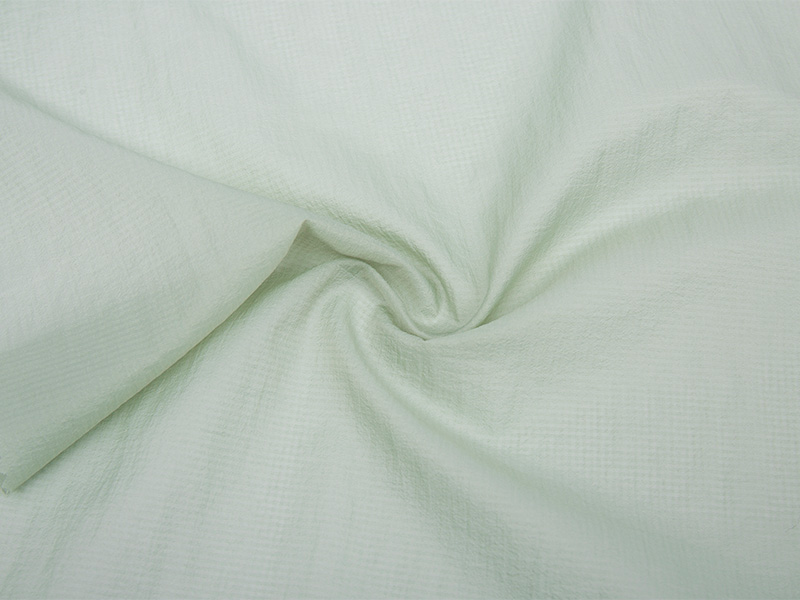The Ultimate Guide to Pocketing Fabric: Techniques, Types, and Applications
2025-08-04
Understanding Pocketing Fabric and Its Importance in Textile Manufacturing
Pocketing fabric is a specialized material designed specifically for creating pockets in garments and other textile products. Unlike regular fabrics, pocketing materials are engineered to withstand frequent use, friction, and weight-bearing while maintaining their shape and durability. At Hetai Textile, with our two decades of expertise in interlining fabrics, we understand that pocketing fabric plays a crucial role in both the functionality and longevity of clothing items.
Key Characteristics of Quality Pocketing Fabric
Premium pocketing fabric should possess several essential qualities:
- High durability to resist wear and tear from constant use
- Excellent shape retention to prevent sagging or deformation
- Appropriate weight and thickness for the intended application
- Good breathability for comfort in clothing applications
- Colorfastness to prevent bleeding during washing
How Pocketing Fabric Differs From Regular Fabric
While regular fabrics focus primarily on aesthetics, pocketing fabrics prioritize functionality. The table below highlights key differences:
| Feature | Pocketing Fabric | Regular Fabric |
|---|---|---|
| Primary Purpose | Functionality and durability | Aesthetics and comfort |
| Weight | Generally heavier | Varies widely |
| Stretch | Minimal to none | Often included |
| Cost | Lower per yard (hidden application) | Higher (visible application) |
Best Pocketing Fabric for Dress Pants: A Comprehensive Analysis
When it comes to dress pants, the choice of pocketing fabric significantly impacts both the garment's performance and the wearer's comfort. At Hetai Textile, our technical team has developed specialized pocketing solutions that meet the exacting standards of high-end tailored clothing.
Essential Qualities for Dress Pant Pocketing
The ideal pocketing fabric for dress pants should:
- Be lightweight yet durable enough to hold items without bulging
- Have excellent breathability to prevent discomfort
- Maintain its shape after repeated use and cleaning
- Be soft enough not to irritate the skin
- Resist pilling and fraying
Material Options Compared
Various materials are used for dress pant pocketing, each with distinct advantages:
| Material | Pros | Cons |
|---|---|---|
| Cotton Poplin | Breathable, soft, natural fiber | Less durable than synthetics |
| Polyester | Highly durable, shape-retentive | Less breathable |
| Cotton-Polyester Blend | Balances durability and comfort | May pill over time |
How to Choose Pocketing Fabric for Suits: Expert Recommendations
Selecting the right pocketing fabric for suits requires careful consideration of several factors. With our extensive experience in textile manufacturing, Hetai Textile recommends the following approach to ensure optimal results.
Key Selection Criteria
When choosing suit pocketing fabric, consider:
- The weight and drape of the suit fabric itself
- The intended use and frequency of wear
- Climate considerations (breathability needs)
- Dry cleaning or washing requirements
- The type of pockets being constructed
Weight Matching Guidelines
A crucial aspect often overlooked is matching the pocketing fabric weight to the suit fabric:
| Suit Fabric Weight | Recommended Pocketing Weight |
|---|---|
| Lightweight (under 8 oz) | 1.5-2 oz pocketing |
| Medium weight (8-12 oz) | 2-3 oz pocketing |
| Heavyweight (over 12 oz) | 3-4 oz pocketing |
Pocketing Fabric vs Lining Fabric: Understanding the Differences
While both pocketing and lining fabrics serve as interior components of garments, they have distinct purposes and characteristics. Hetai Textile's comprehensive product range includes specialized solutions for both applications.
Functional Differences
The primary differences between these two fabric types include:
- Pocketing fabric is designed specifically to form pockets and bear weight
- Lining fabric covers the interior of garments for comfort and aesthetics
- Pocketing requires more durability, while lining prioritizes smoothness
- Pocketing is typically hidden, while lining is often visible
Technical Specifications Comparison
| Characteristic | Pocketing Fabric | Lining Fabric |
|---|---|---|
| Tensile Strength | High | Moderate |
| Friction Resistance | Very High | Moderate |
| Breathability | Medium to High | Variable |
| Common Materials | Cotton, polyester, blends | Silk, acetate, rayon |
Breathable Pocketing Fabric Options for Enhanced Comfort
In warm climates or for active wear, breathable pocketing fabric becomes essential. Hetai Textile's R&D team has developed innovative solutions that combine durability with superior air permeability.
Top Breathable Materials
Several materials excel in breathability for pocketing applications:
- 100% cotton voile - lightweight and highly breathable
- Cotton-polyester mesh - combines breathability with durability
- Micro-perforated synthetics - engineered for maximum airflow
- Bamboo blends - naturally breathable and moisture-wicking
Performance Comparison
| Material | Breathability Rating | Durability | Best For |
|---|---|---|---|
| Cotton Voile | Excellent | Good | Lightweight garments |
| Cotton-Poly Mesh | Very Good | Excellent | Activewear |
| Micro-perforated | Good | Very Good | Formal wear |
Durable Pocketing Fabric for Heavy-Duty Use in Workwear
For workwear and heavy-duty applications, pocketing fabric must meet exceptionally high durability standards. Hetai Textile's industrial-grade pocketing solutions are engineered to withstand the toughest conditions.
Key Requirements for Heavy-Duty Pocketing
Effective heavy-duty pocketing fabric should feature:
- Reinforced weave or construction
- High abrasion resistance
- Exceptional tear strength
- Resistance to oils and chemicals
- Minimal stretch under load
Material Options for Demanding Applications
| Material | Key Benefit | Ideal For |
|---|---|---|
| Canvas | Extreme durability | Carpenter pants, tool storage |
| Cordura®-type nylon | Abrasion resistance | Military/tactical gear |
| Reinforced polyester | Chemical resistance | Industrial workwear |
Hetai Textile's Expertise in Pocketing Fabric Solutions
With our established history since 2002 and comprehensive manufacturing capabilities including weaving, dyeing, and coating, Hetai Textile stands at the forefront of pocketing fabric innovation. Our technical team continuously develops new solutions that meet evolving market demands while maintaining rigorous quality standards.
From lightweight breathable pocketing fabric options to durable pocketing fabric for heavy-duty use, our product range addresses diverse needs across the garment industry. We understand that whether you need the best pocketing fabric for dress pants or solutions for workwear, the right pocketing material makes all the difference in garment performance and longevity.
Our integrated quality control system ensures that every yard of pocketing fabric meets exact specifications, helping our clients create superior products. As we look toward the future, Hetai Textile remains committed to advancing pocketing fabric technology through continuous research and development.
Contact Us for More Details
Don't hesitate to contact when you need us!


 English
English  中文简体
中文简体 









